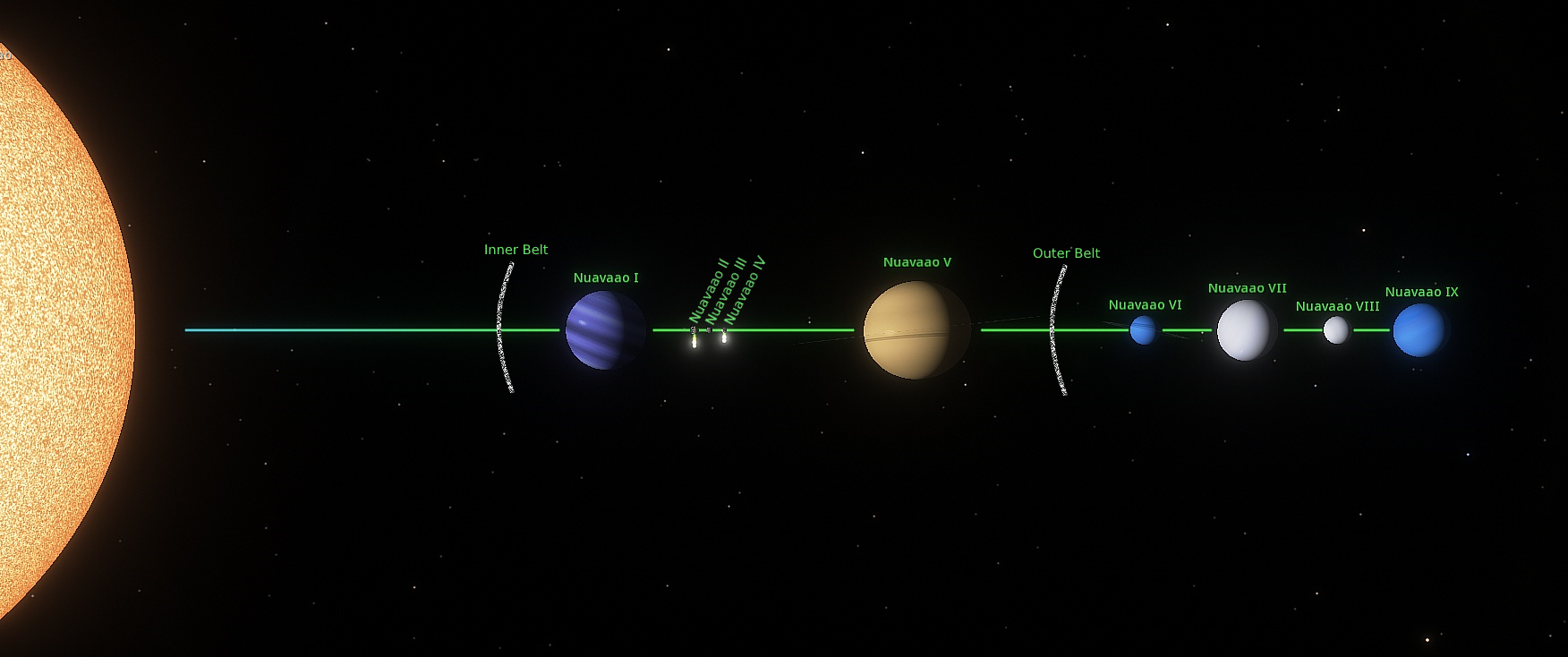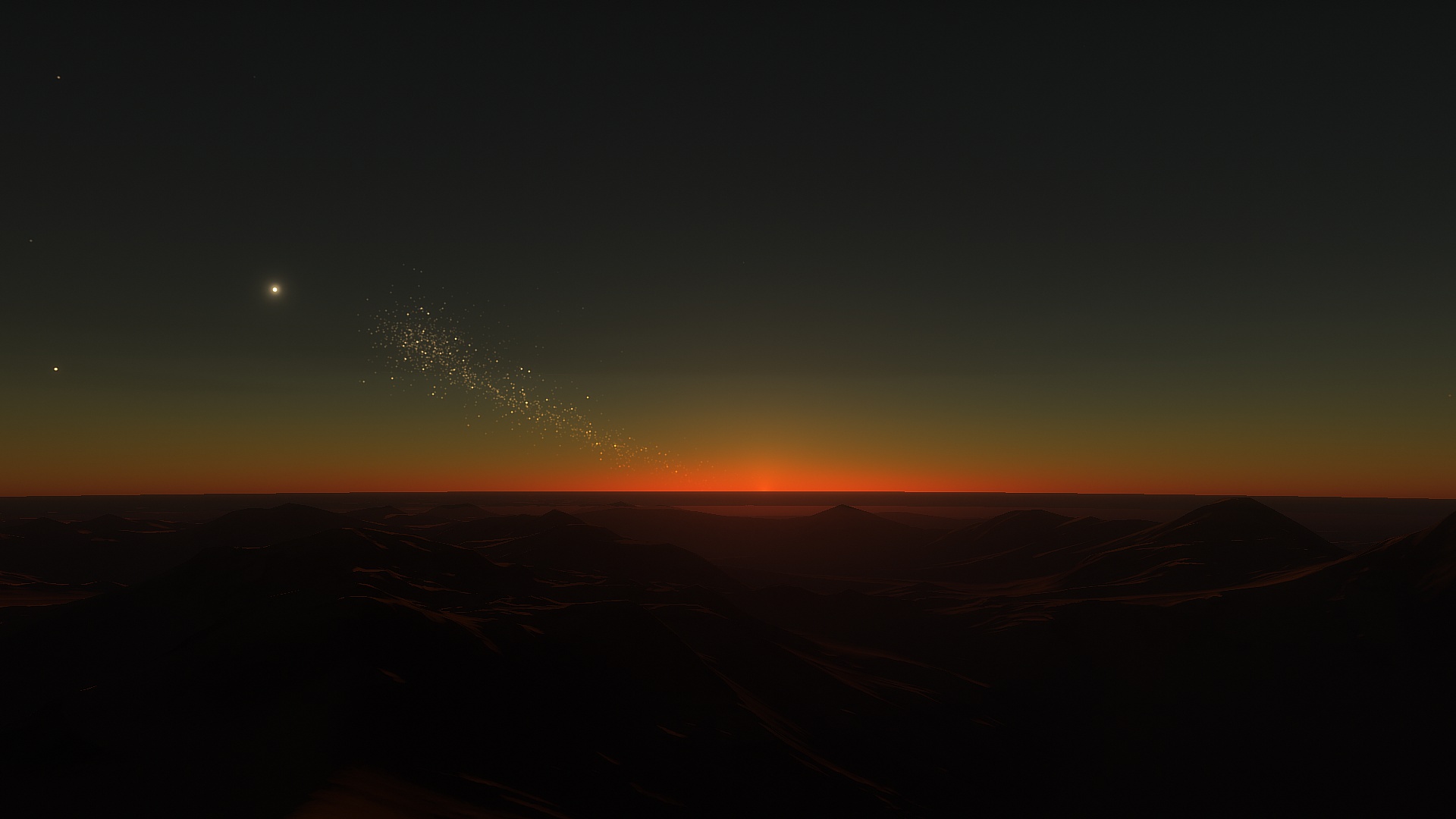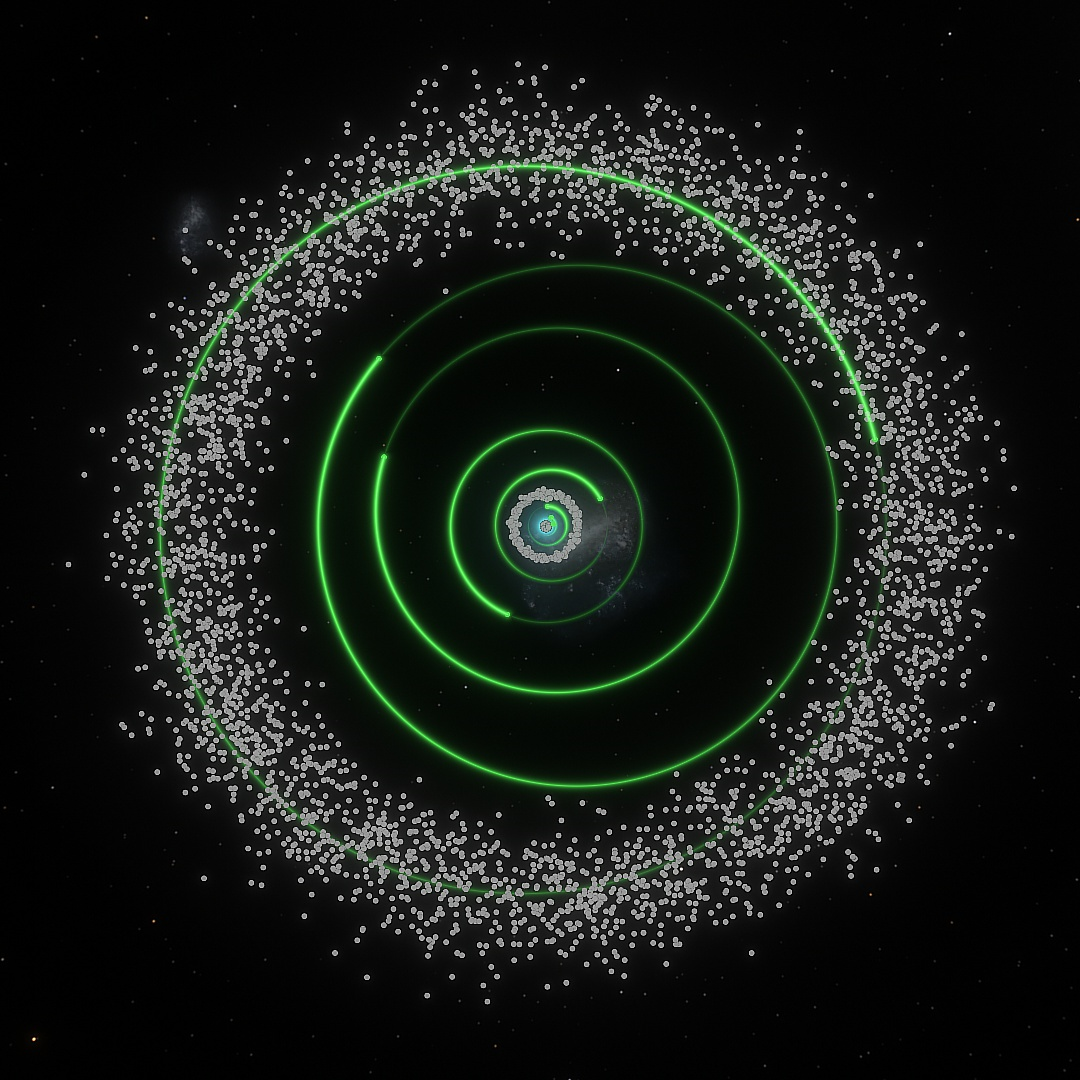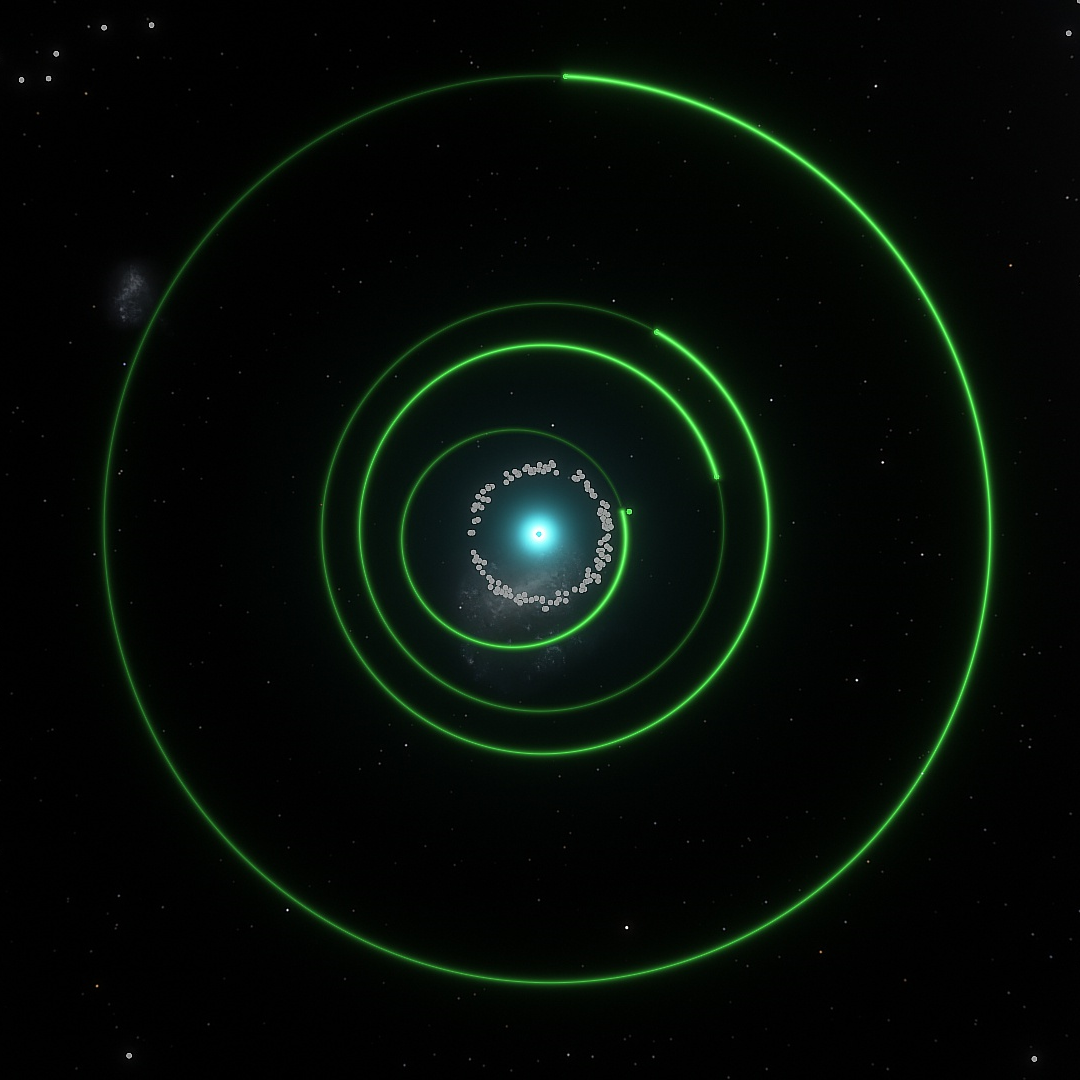Nuavaao system
The Nuavaao system is situated beyond the Annamite Line, 275.16 light-years straight-line from Boundary Garden. It was settled by the Vieivaaii, who were ferried through the Rào Cỏ blinkgate and embarked on the ill-fated colony ship UAS Terpsichore. Vieivaao, the ancestral home of the Vieivaaii, is close to the Long Rim and is one of the last stops before embarking on the treacherous journey through the Rim to the Dawnline Shore. Settlers were offered a chance to start fresh, without the continual stress of being a heavily-trafficked system, but evidently suffered the fallout of shoddy workmanship typical of Second Expansion-era expeditions, and met only tragedy and hardship.
The system is composed of a K2 IV main-sequence orange subgiant, nine planets (three terrestrial and six jovians), and two asteroid belts (the Inner and Outer Belts). A belt of icy planetesimals, called Kimik's Bane, stretches from roughly 23.7 AU to 41 AU; the asteroid that struck the Terpsichore is believed to have come from this area. The system is roughly 5.035±0.1 billion years old, formed from a particulate cloud that is believed to have been ejected from a nearby nebula. The remains of this cloud can still be seen in the system's Oort Cloud.
Nuavaao (technically Nuavaao II), the second from the sun, is one of two planets within Nuavaao's habitable zone; Nuavaao III is technically habitable, but is extremely cold, ranging between -60 and -78 degrees Fahrenheit on average. Nuavaao II, by contrast, is much closer to the inner boundary of the habitable zone, and is much warmer.
Nuavaao's gas dwarfs range from 2 to 25 Earth masses, making them very small, with two jovians that are roughly comparable to Jupiter: one, Nuavaao V, orbits just outside the system's frost line, and another, Nuavaao I, is a relatively cool hot Jupiter orbiting at 0.425 AU from the star. Nuavaao I's orbit is fairly elliptical, suggesting that its migration past the frost line was due to an interaction that ejected another planet from the system in the system's infancy. Nuavaao I's migration is believed to have lent both Nuavaao II and III their water contents, as well as possibly Nuavaao III's thicker atmosphere. Nuavaao I has far fewer moons than other gas dwarfs its size, at only two, though the remains of other moons may at least partially constitute the Inner Belt.
Though not bright enough to be seen during the day, half of the Inner Belt is visible on Nuavaao at sundown. The bright object just to the left is Nuavaao I—the "twilight star".
Astronomical surveys have largely slowed to a standstill after the Second Cataclysm, though in recent years with the tenuous stability they have begun to pick up again. However, the settlers have even less access to powerful telescopes now, and no known space-launch capability, and so there is a large bottleneck of study. Much of the system beyond what has already been detailed is simply not known. In spite of this, there is a friendly but spirited debate among Nuavaaii astronomers as to the true origin of the Nuavaao system—situated below the galactic plane and tilted significantly, almost perpendicular relative to the galactic equator, Nuavaao's ecliptic matches closely with the Large Magellanic Cloud, though this galaxy is hundreds of thousands of light-years distant, leading some astronomers to theorize that the Nuavaaoaa star is actually from the Cloud, while others postulate that some far-distant trauma tilted the system's ecliptic so dramatically. Whatever the case, the true answer remains an enigma.
System diagram, showing the locations of the 4,000 largest objects in Kimik's Bane (note the orbit of Nuavaao IX within this cloud) and the 225 largest objects in the Outer Belt:
Detail of the inner system (i.e. within the Outer Belt--note the proximity of Nuavaao I to the Inner Belt):
Type
Star System
Included Locations
Owning Organization
Contested By
Characters in Location






Comments